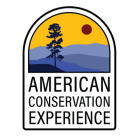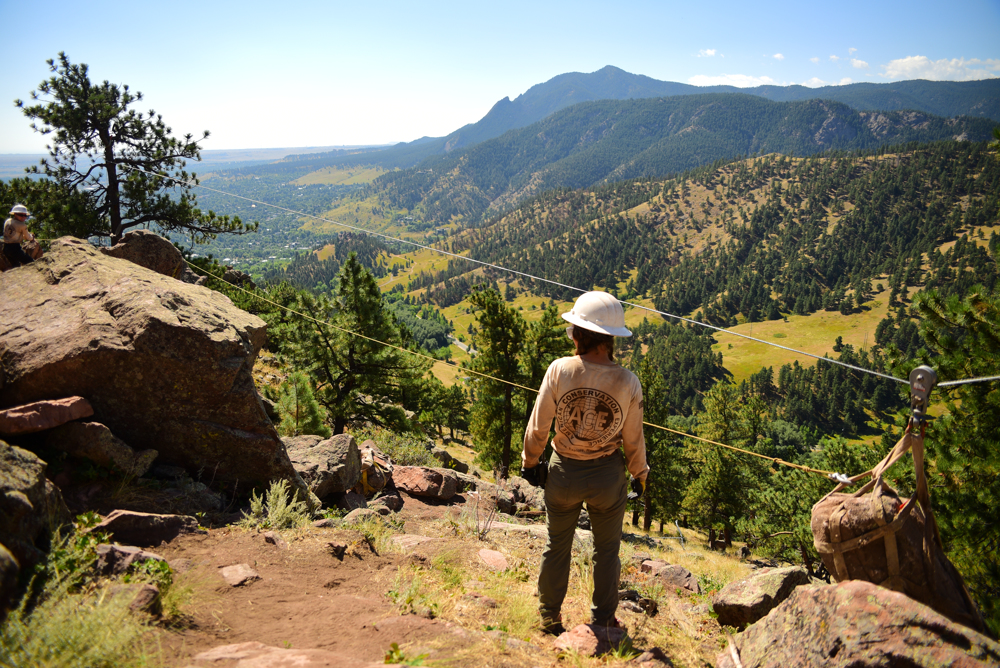Across the West
By: Jess Michalski and Ben Schian
In the past two months, we have seen a wide variety of unique, beautiful ecosystems. From salt flats in Oklahoma, to a desert and oasis in California and Arizona, to the snowy mountains in Wyoming. Each ecosystem has been unique, lovely, and something new we had never had the opportunity to see before. It’s impossible to choose a favorite, so we are happy to write about each. We’ve done our surveying at Salt Plains NWR in Oklahoma, Bill Williams River NWR in Arizona, Havasu NWR in California, and National Elk Refuge in Wyoming, and in between survey sites we have seen even more beautiful ecosystems and landscapes, from the Grand Canyon, to the Pacific Ocean, to national parks such as Joshua Tree, Death Valley, and Grand Teton! Of course, completing a coast-to-coast trip would allow us to see an immense amount of natural wonders, but we never could’ve dreamed of seeing so much unique beauty.
Salt Plains National Wildlife Refuge
We didn’t know what to expect when coming to Salt Plains, as the town it lays in has a population of ~200 people, and many of the refuge activities had recently closed for the season when we arrived. We thought it might be sort of slow there, but we were way wrong! Salt Plains draws thousands of visitors each year for the ability to dig for selenite crystals- not just any selenite crystals though – the crystals that develop in the salt flats here have a unique hourglass shape that you can’t find anywhere else on Earth. Although the crystal digging season was over there were two big positives, one being the refuge manager personally taking us out to dig for crystals when we arrived, and the other big positive was the reason why the crystal dig site had closed- for the safety of thousands and thousands of migrating sandhill cranes. If you haven’t personally seen or heard thousands of sandhill cranes flying across the sky, you’ve got to add this to your bucket list!
When one door closes another one opens, and although visitors couldn’t dig for crystals, we had visitors come from all across the country to view the sandhill cranes flying overhead. There were also several people on the lookout for the endangered whooping crane. We didn’t get to see any, but we know from conversations with visitors and staff that they were there. Which gives us another reason to return one day! Some people may think Oklahoma City would be the go-to place to see in Oklahoma, but the very unique and very striking salt plains may make you think twice about that.

Salt Plains NWR, where visitors can crystal-dig or see sandhill cranes (Photo by Ben Schian)
Bill Williams River National Wildlife Refuge
Our time in Bill Williams River National Wildlife Refuge began with the understanding that we would be in this area for longer than usual. It did not take long for us to become comfortable in the area. Although the region was so strangely beautiful, it felt like Mars! Our work in “Bill Will”, as it is called locally, was a warm surprise after Oklahoma! We spent our days surveying the warm Arizonan sun, November was the perfect time to visit. We met with visitors coming to do use the amazing hiking trails through the refuge, go kayaking or canoeing, or driving down the wild Planet Ranch Road… which truly felt like you left Arizona, and travelled to a new planet! On one occasion, we had the opportunity to work with refuge volunteers and staff to go to a remote area of the refuge to scout for future projects. It was a fun road trip for the day, and included some historic elements, as we got to learn about the Mexican ranchers who previously utilized the land for their livelihood when the land was not part of the US. After work was through for the day, we would often watch the sunset over the water, and see all the stars come out! There were many jackrabbits, roadrunners, and quail, as well as many bird species we weren’t familiar with, but loved to watch! Definitely put Bill Williams River on your list of refuges to see if you love being surrounded by mountains and bright blue waters!

Our survey location at Bill Williams River NWR! (Photo by Jess Michalski)
Havasu National Wildlife Refuge
Getting to Havasu refuge was very simple after Bill Williams River – just about an hour away, and some locations were even closer! Our time here was slightly longer, and we continued to enjoy the sunshine (and occasional downpour) of the area. Havasu means blue-green water in the Havasupai people’s language. This name holds true for the water of the lake that encompasses the refuge. It brings in many visitors to walk the trails, fish, and to kayak. Daily we would cross the boundary between Pacific Time and Mountain Time from California, where the headquarters and housing were, to Arizona, where the majority of the refuge is! It seemed like we were getting 25 or 26 hours in a day! Beyond surveying we also worked at a local animal shelter to acquire our service hours for AmeriCorps. We loved spending time with the shelter dogs so much that we ended up being there almost everyday before work! We wrapped up surveying Havasu, with the help of our logistic coordinator, Jessie, who visited to see how surveying goes on the ground! We showed her how the surveying efforts go, in terms of day-to-day work, so she is ready to get 2020 interns ready to go soon!

The view from where we surveyed at in Havasu NWR. (Photo by Jess Michalski)

Tiara and Bambino from Needles Animal Shelter taking a walk one morning with us! (Photo by Jess Michalski)
National Elk Refuge
We couldn’t have dreamed of a more unique or beautiful location for our final refuge. Once again, the National Elk Refuge makes you question whether or not you’re actually on planet Earth or some other mystical wonderland. Situated less than an hour from Yellowstone National Park, less than 10 minutes from Grand Teton National Park, and surrounded by the Bridger-Teton National Forest, National Elk Refuge could be considered to be in the Mecca of natural beauty. That being said, the wildlife is the true attraction here. It would be easy to think National ELK Refuge is all about the elk, but honestly there are so many other species who call this place home. Elk are just one of four beings in the deer family here, alongside moose, mule deer, and white-tailed deer. And that’s just the deer family! As for birds, there was a lot of diversity too, with swans, ravens and even bald eagles in the area. From afar we got the chance to see some grey wolves, which was a lot more comfortable than if they were right next to us! Our favorite animals here, the bighorn sheep, did in fact get really close and comfortable with us. On the wildlife drive at this refuge, dozens of bighorns would walk around, cross the roads, and come within 20 feet of people!
We were only in National Elk Refuge for 5 days, as opposed to 2 weeks like we had gotten used to. Despite being there for less than half the amount of time we usually spent in a refuge, we probably saw more wildlife here than anywhere else.
The humans here were cool too! This was the first place where we surveyed inside a visitor center, and all the staff there were very kind. One of the naturalists here ended up being our roommate and she made the nights in the bunkhouse really fun and full of laughter. The visitors we spoke to here came from all across the state, the country, and even some international visitors had to see what National Elk was all about!
After having travelled across the country nearly 2 full times, and getting to stay in so many memorable places, the only negative part of staying in National Elk, was that we couldn’t stay longer. Once again though, that just gives us another reason to come back (maybe next time in the summer!)

A Bighorn sheep showing that it’s not just about elks at National Elk Refuge. (Photo by Ben
Our journey as National Visitor Survey interns for USFWS and AmeriCorps can be parallel with the ecosystems. Each day we found new things to be excited about, saw new wildlife, learned new facts, met new faces. We saw the beauty of the US, from each coast, from the mountains, forests, marshes, beach, salt flats, desert, and the snow covered mountains. Each place and day held a new lesson for us, whether that be professional, educational, or personal. We can comfortably say that our four months as NVS interns left a lasting impression and appreciation for the natural world in our country. We hope that the survey will help more people to come to enjoy these natural spaces as much as we have.

